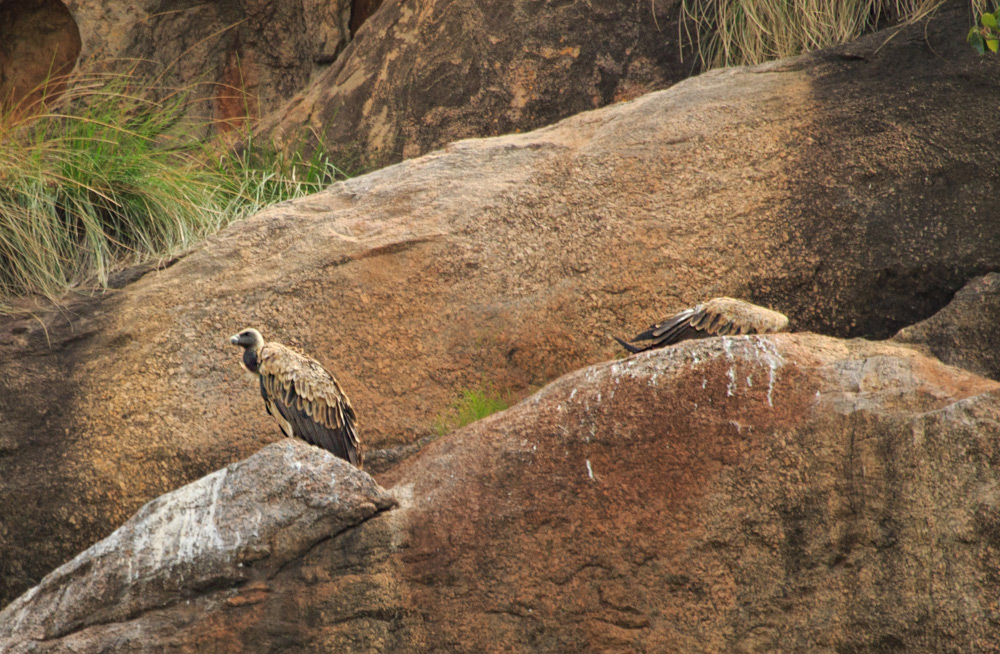
Ramnagara (or Ramadevarabetta) Vulture Sanctuary, with an area of 346.14 hectares, was declared as a Vulture Sanctuary on January 31, 2012. It has received attention from Bangalore’s ‘wildlifers’ and consequently, there have been a few interesting articles published about this area in the media. However, the story I am about to relate is not a pretty one and exposes the potential deficiencies in vulture conservation strategy.
While birding at Ramanagara on 14th June 2015, Vishnupriya and I scanned the cliffs for Long-billed or Indian Vultures (Gyps indicus). We located two individuals almost immediately. As we stood observing them, we noticed a third individual laying flat on the rock without moving for a long time. On closer inspection we could see ruffled up feathers of its primaries and realized something was wrong. We continued watching for another 20-25 minutes and since the bird did not move at all, we concluded that it was dead. Obviously, we don’t know the reason for this particular individual’s death.
Indian Vulture populations took a hit in late 1990’s and more than 90% of the population died out in a short timespan. Feeding on cattle carcasses that had medical Diclofenac content had caused renal failure in these vultures. Ever since then, veterinary use of Diclofenac has been banned. A short documentary was made by a group of biologists in 2009 on the same population of vultures. They discovered that, while none of the veterinary shops nearby stocked Diclofenac, the vets were circumventing the ban by using human-prescribed Diclofenac drugs on cattle. If this practice is indeed taking place, it will be dangerous for one of the last breeding populations of these vultures in south India.

 CI is a non-profit, non-commercial portal that aims to facilitate wildlife and nature conservation by providing reliable information and the tools needed to campaign effectively.
CI is a non-profit, non-commercial portal that aims to facilitate wildlife and nature conservation by providing reliable information and the tools needed to campaign effectively.
Chosen as 'Picture of the Week'
Vets circumventing the ban on Diclofenac by using Diclofenac drugs meant for humans on cattle can be equally dangerous for the last vultures of India. We need all out efforts to ban the drug altogether.